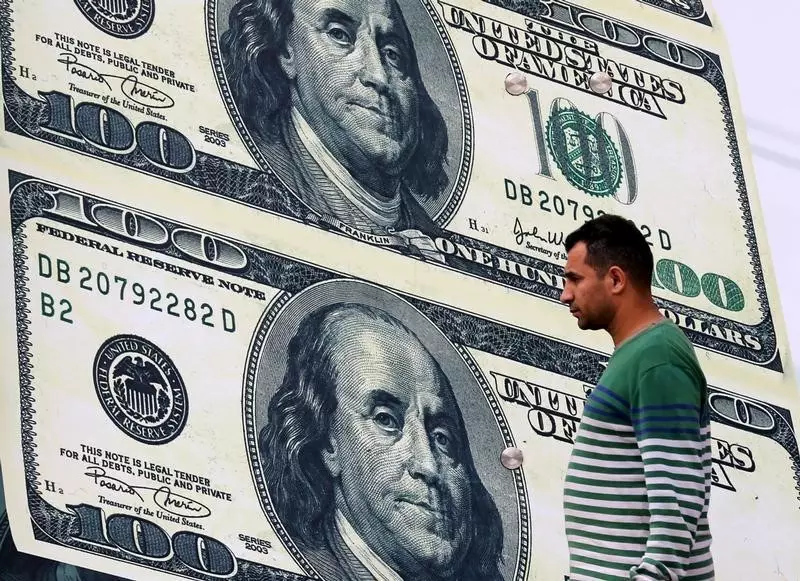The US dollar demonstrated a surprising stability on Thursday after experiencing minor declines in the previous session. This steadiness comes on the heels of recently released inflation reports that indicated a cooling trend in consumer prices. As we approached the early morning hours in the US, the Dollar Index—an index measuring the value of the dollar against a basket of six major currencies—registered a modest increase, stabilizing at 108.950. This bounce-back marks a significant shift after three consecutive days of losses.
Analysts pointed out that a decrease in the Consumer Price Index (CPI) spurred a more confident sentiment in global asset markets. Investors took notice of the slightly lower-than-expected core CPI reading for December, which contributed to a positive shift. Yet, amid this optimism, experts from ING warned that persistent headline and core inflation rates hovering near 3% year-on-year may hinder the Federal Reserve’s capacity to implement any cuts in interest rates in the near term. The market has priced in only a small easing—around 36 basis points—forecasted for 2025, showcasing the delicate balance the Fed must maintain in navigating the current economic landscape.
In addition to inflation figures, the upcoming inauguration of Donald Trump and his proposed economic policies are fueling uncertainties surrounding the dollar’s future trajectory. Trump’s intention to impose robust tariffs on both allies and adversaries raises flags about potential price hikes across various sectors. As traders brace for the implications of the new administration, the sentiment surrounding the dollar remains somewhat elevated but cautious.
Additionally, the focus of the market switched to the Senate confirmation hearing for Scott Bessent, Trump’s pick for Treasury Secretary. Analysts anticipate he will not likely disrupt the longstanding strong dollar narrative during his testimonial, which assures investors that dollar tightness is here to stay for the foreseeable future. These geopolitical factors coupled with domestic economic indicators will undoubtedly shape trader sentiment and currency valuations moving forward.
On the other side of the Atlantic, the British pound found itself under pressure as it dropped 0.3% against the US dollar, reaching levels around 1.2199. This dip follows the release of disappointing growth figures indicating that the British economy barely managed to inch forward in November. With a reported GDP growth of just 0.1% from October, the data fell short of the expected 0.2% rise, raising concerns about the sustainability of economic momentum in the UK.
The outlook from the Bank of England indicates a likelihood of interest rate cuts beginning in February, with future cuts already mostly integrated into market pricing. This anticipation further weighs on the strength of the pound, confirming a bearish sentiment among traders.
In the Eurozone, the euro lost ground against the dollar, with EUR/USD falling slightly to 1.0290. Recent inflation data from Germany and Italy, confirming subdued price pressures in December, adds complexity to the overarching narrative in the region. Analysts from ING observed that the euro was unable to capitalize on favorable conditions that could have propelled the pairing upwards. The failure to maintain a rally to 1.0350 signals a growing concern among investors about the eurozone’s potential for lagging growth.
The European Central Bank (ECB) has signaled its inclinations toward easing interest rates further, with a projected 100 basis points cut in 2025—significantly more aggressive in comparison to the Federal Reserve’s expected trajectory. Such policies may deepen the challenges faced by the euro, especially as investors remain vigilant of future economic forecasts from the region.
In Asia, the yen has surged against the dollar, with USD/JPY dropping 0.4% to 155.75, marking its lowest point since mid-December. Recent remarks from BOJ Governor Kazuo Ueda suggesting the possibility of interest rate hikes during the next meeting have spurred hopes for a tightening monetary policy in Japan. As inflation and wage growth stabilize, traders are closely watching for indications that could shift the dynamics in the Asian financial landscape.
Conversely, the USD/CNY pair showed little change, hovering around a 16-month high at 7.3317, as traders await key GDP data for the fourth quarter. This figure will be pivotal for understanding the broader economic health of China and its implications on the currency exchange landscape moving forward.
As global markets remain vigilant and liquidity adjusts to various economic indicators, the interplay of inflation rates, monetary policies, and geopolitical factors will continue shaping the currencies in focus. The resilience of the dollar, the struggles of the pound and the euro, and the positive trajectory of the yen highlight the complex and often unpredictable nature of currency trading in today’s fast-paced economic environment.

